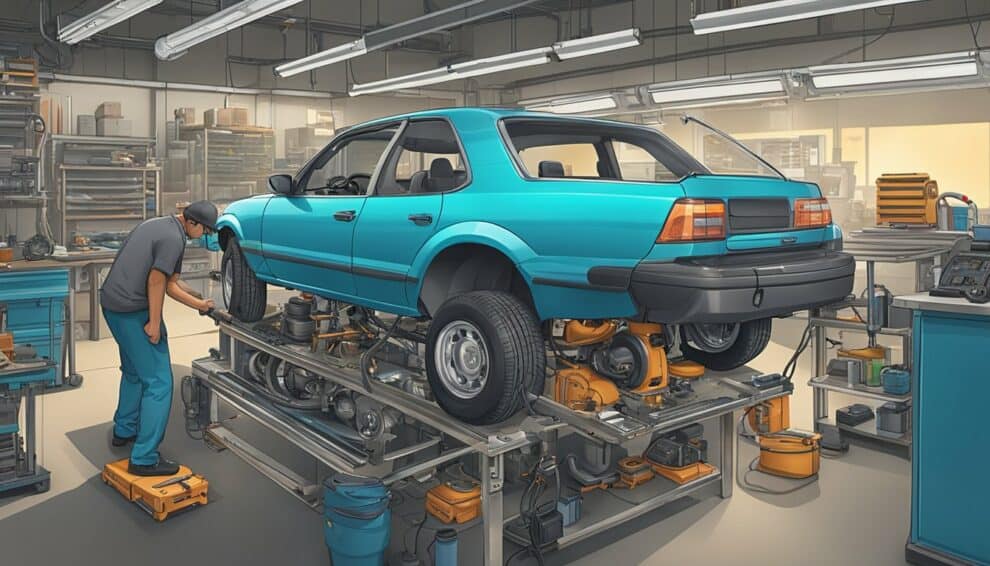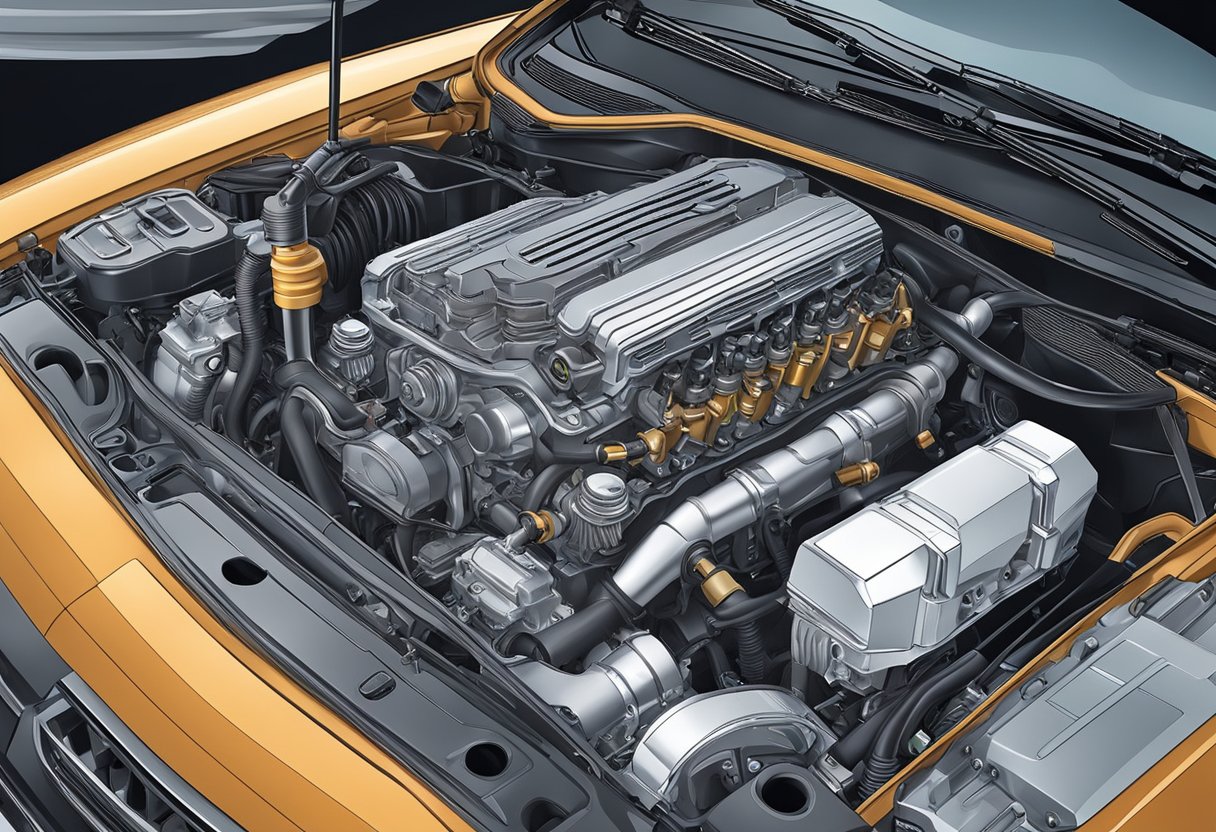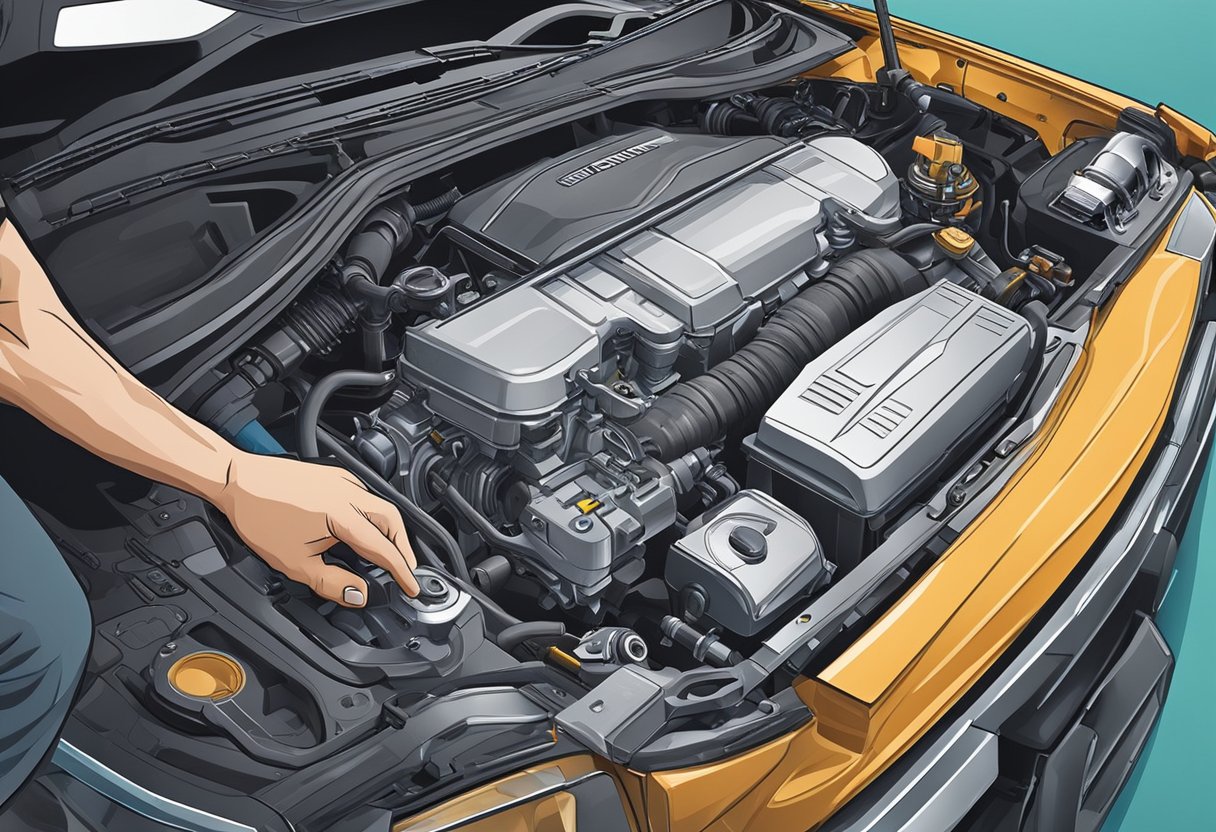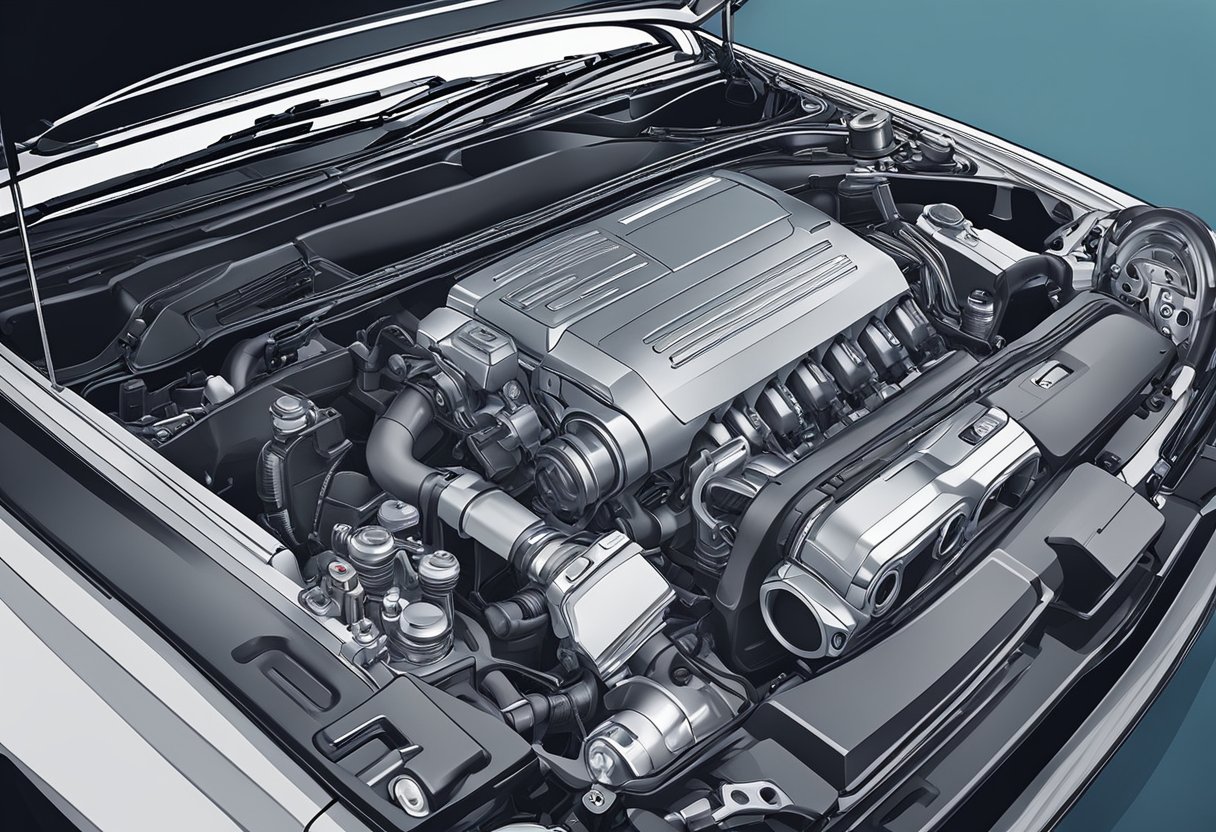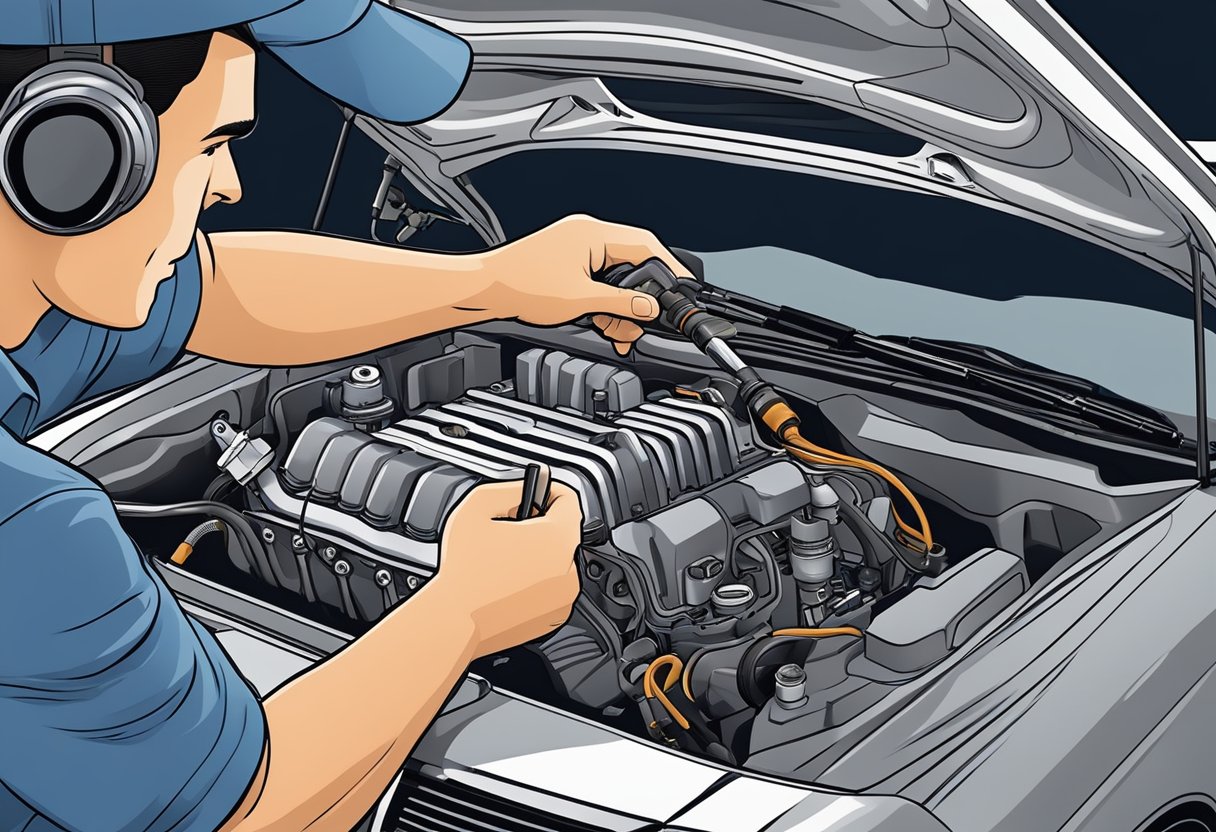If you are experiencing issues with your vehicle’s performance, the P0010 code could be the culprit.
This code indicates a problem with the camshaft position actuator circuit, which can cause a variety of symptoms such as rough idling, poor acceleration, and decreased fuel efficiency.
Troubleshooting this code can be a daunting task, but with the right insights, you can diagnose and fix the issue quickly and effectively.
One of the most common causes of the P0010 code is a faulty camshaft position actuator solenoid.
This component controls the flow of oil to the camshaft position actuator, which in turn adjusts the timing of the engine’s valves.
If the solenoid is not functioning properly, the engine may not run smoothly and could even stall.
Other potential causes of the P0010 code include damaged wiring or connectors, a malfunctioning camshaft position sensor, or a faulty engine control module.
In order to diagnose and fix the P0010 code, it is important to have a thorough understanding of your vehicle’s engine and electrical systems.
This article will provide you with the insights you need to troubleshoot the code and get your vehicle running smoothly again.
From checking the wiring and connectors to testing the components of the camshaft position actuator circuit, we will guide you through the steps necessary to identify and resolve the issue.
Understanding the P0010 Code
Definition and Function
The P0010 code is a generic powertrain code that indicates a problem with the camshaft position actuator circuit.
This code is often triggered when the engine control module (ECM) detects that the camshaft position actuator is not functioning properly.
The camshaft position actuator is responsible for controlling the camshaft timing, which in turn controls the timing of the engine’s intake and exhaust valves.
When the camshaft position actuator is not functioning properly, it can cause a number of issues with the engine’s performance.
These issues can include reduced power and acceleration, poor fuel economy, and rough idling.
If left untreated, the problem can also cause damage to other engine components, such as the camshaft and crankshaft.
Common Causes of P0010
There are several common causes of the P0010 code, including:
-
Faulty camshaft position actuator: The most common cause of the P0010 code is a faulty camshaft position actuator.
Over time, these actuators can wear out or become damaged, causing them to malfunction.
-
Wiring issues: Wiring problems can also cause the P0010 code to appear.
If the wiring that connects the camshaft position actuator to the engine control module is damaged or corroded, it can cause the actuator to malfunction.
-
Low oil pressure: Low oil pressure can also cause the P0010 code to appear.
If the engine is not properly lubricated, it can cause the camshaft position actuator to malfunction.
-
Failed engine control module: In rare cases, a failed engine control module can also cause the P0010 code to appear.
If the ECM is not functioning properly, it may not be able to properly communicate with the camshaft position actuator.
Overall, the P0010 code can be a frustrating problem for drivers.
However, by understanding the common causes of the code and taking steps to address the issue, you can get your engine running smoothly again.
Diagnostic Procedures
When troubleshooting the P0010 code, it is important to follow a diagnostic procedure to ensure that the root cause of the problem is identified and resolved.
Here are the steps you should follow:
Initial Inspection
The first step in diagnosing the P0010 code is to perform a visual inspection of the camshaft position actuator and its related components.
Check for any signs of damage, such as cracks or leaks, and make sure that all connections are secure.
You should also inspect the timing belt or chain to ensure that it is properly aligned and tensioned.
Diagnostic Trouble Codes (DTC) Analysis
The next step is to retrieve the diagnostic trouble codes (DTCs) associated with the P0010 code.
Use a scan tool to read the codes and record any additional codes that may be present.
This will help you to narrow down the possible causes of the problem.
Electrical Testing
Once you have identified the possible causes of the P0010 code, you should perform electrical testing to determine the root cause of the problem.
This may involve testing the camshaft position actuator solenoid, the camshaft position sensor, and other related components.
Use a multimeter to test for continuity, resistance, and voltage, and refer to the manufacturer’s specifications for acceptable values.
By following this diagnostic procedure, you can effectively troubleshoot the P0010 code and determine the root cause of the problem.
Remember to always refer to the manufacturer’s specifications and procedures, and to exercise caution when working with electrical components.
Repair and Replacement
If you have determined that your vehicle’s P0010 code is due to a faulty camshaft position actuator, you will need to repair or replace it.
Here are some steps to follow:
Camshaft Position Actuator Repair
If the actuator is not completely broken, it may be possible to repair it.
First, remove the actuator from the engine and inspect it for damage or wear.
If the actuator is dirty, clean it with a soft cloth and solvent.
Check the wiring and connectors for any damage or corrosion, and repair or replace as necessary.
If the actuator is still not functioning properly, it may need to be recalibrated.
This can be done using a diagnostic tool or by following the manufacturer’s instructions.
Timing Components Check
While you have the camshaft position actuator removed, it’s a good idea to inspect the timing components as well.
Check the timing chain or belt for any signs of wear or damage. If the timing chain or belt is loose or damaged, it should be replaced.
Post-Repair Testing
After repairing or replacing the camshaft position actuator and any other necessary components, it’s important to test the system to ensure it is functioning properly.
Use a diagnostic tool to clear the P0010 code and monitor the engine for any signs of the code returning.
Take the vehicle for a test drive to ensure smooth operation and proper performance.
Remember to follow the manufacturer’s instructions and safety precautions when repairing or replacing any components in your vehicle.
If you are unsure about any steps or procedures, consult a professional mechanic for assistance.
Preventative Measures
To avoid encountering the P0010 code, it’s essential to take preventative measures.
These measures include regular maintenance and timely repairs.
Regular Maintenance
Regular maintenance is crucial in preventing the P0010 code.
You should ensure that you follow the manufacturer’s recommended maintenance schedule for your vehicle.
This includes regular oil changes, air filter replacements, and spark plug replacements.
Regular maintenance will help keep your engine running smoothly and prevent any issues that may trigger the P0010 code.
Timely Repairs
Timely repairs are also essential in preventing the P0010 code.
If you notice any signs of engine trouble, such as rough idling or reduced power, you should have your vehicle inspected by a qualified mechanic.
Ignoring these symptoms can lead to more severe problems, including triggering the P0010 code.
If you do encounter the P0010 code, it’s essential to address the issue promptly.
Delaying repairs can cause further damage to your engine and lead to costly repairs.
By taking preventative measures, you can avoid encountering the P0010 code and keep your engine running smoothly.
Professional Assistance
If you have tried all the troubleshooting steps and still cannot resolve the P0010 code, it may be time to seek professional assistance.
Here are some things to keep in mind when considering this option.
When to Consult a Mechanic
If you are not familiar with car engines, it can be difficult to diagnose and fix the P0010 code on your own.
A mechanic has the necessary expertise and tools to identify the root cause of the problem and provide a solution.
Additionally, if you have attempted several fixes and the code keeps recurring, it may be time to seek professional help.
Choosing the Right Service Provider
When choosing a mechanic or service provider, it is important to do your research.
Look for a reputable and certified mechanic who specializes in your make and model of car.
You can also ask for recommendations from friends and family or check online reviews.
Before agreeing to any repairs, make sure to get a detailed estimate of the costs involved.
Ask questions about the parts that need to be replaced and the labor involved.
A good mechanic will be transparent about the work that needs to be done and the associated costs.
In conclusion, seeking professional assistance can be a good option if you are unable to fix the P0010 code on your own.
By choosing a reputable and certified mechanic and asking the right questions, you can ensure that your car is in good hands.
As an Amazon Associate we earn from qualifying purchases.







